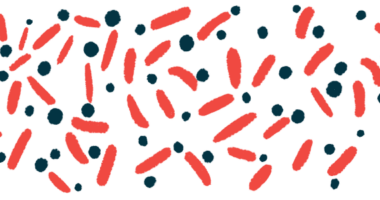Biomarker of oxidative stress could help track ALS progression: Study
Levels of 4-HNE found to be increased in ALS patients and linked to survival

A blood biomarker of oxidative stress, a type of cellular stress implicated in amyotrophic lateral sclerosis (ALS), is significantly increased in ALS patients and its levels seem to correlate with disease progression and survival.
That’s according to a recent analysis of study data from Coya Therapeutics, with the company saying that its findings demonstrate the utility of the biomarker — called 4-hydroxynonenal, or simply 4-HNE — as an ALS disease biomarker.
The data, presented at a recent scientific conference, also support 4-HNE’s use as a monitoring tool in a planned Phase 2 trial that would test the company’s treatment candidate COYA 302 in ALS patients.
The company plans to submit an application seeking a green light of that trial in the U.S. in the coming months, with a launch intended for later this year.
“The demonstration that serum [blood] levels of 4-HNE are highly correlated with ALS progression and survival highlights the potential value of this lipid peroxide as a biomarker of disease [mechanisms] and as an independent monitor of clinical status,” Stanley Appel, MD, chairman of Coya’s scientific advisory board, said in a company press release.
Higher levels of 4-HNE linked to faster ALS progression, shorter survival
In ALS, a type of cellular damage called oxidative stress is thought to be one of the processes contributing to neurodegeneration. Oxidative stress is characterized by an overabundance of toxic reactive oxygen species (ROS) molecules formed during a cell’s metabolic processes that cannot be fully cleared by the body’s antioxidant defense systems, leading to nerve cell toxicity.
4-HNE is a type of ROS that’s been implicated in ALS disease processes, and Coya believes it could be a promising disease biomarker.
In the study, researchers at the Houston Methodist Hospital, in Texas, evaluated 4-HNE levels in randomly selected blood samples collected from 50 adults with sporadic ALS between 2018 and 2022. These adults were part of a long-term patient registry. The biomarker also was measured in blood samples from 53 age-matched healthy adults, who served as controls.
The results showed that 4-HNE was significantly elevated in ALS patients. Further, higher levels of the biomarker in people with ALS were associated with a faster disease progression and shorter survival, reflected by a shorter time between ALS onset or diagnosis and death.
At diagnosis, 4-HNE levels were higher in people with bulbar-onset disease compared with the limb-onset form. In bulbar onset, muscle weakness, an ALS hallmark, first affects the head and neck, while in limb-onset, the arms and the legs are the first to be impacted. That finding also paralleled the shorter time between diagnosis and death observed in the bulbar-onset group.
Analyses showed that 100% of patients who had blood levels of 4-HNE higher than 8 micrograms per milliliter died within the next 21 months, or about 1.75 years. Meanwhile, two-thirds of patients with levels below that cut-off were still alive at 21 months. This showing highlights its prognostic utility, per Coya.
Upcoming Phase 2 trial of COYA 302 plans to use 4-HNE as ALS biomarker
The company now will use the biomarker to monitor patients in the upcoming Phase 2 trial of its investigational ALS treatment COYA 302.
COYA 302 is an immunotherapy that takes a dual approach to treating neurodegenerative diseases. It simultaneously increases the activity of immune cells called regulatory T-cells, or Tregs, that help keep inflammation under control, while suppressing the harmful inflammation produced by other immune cell types.
The under-the-skin (subcutaneous) injectable therapy contains a low dose of interleukin-2 (IL-2), an immune signaling molecule that can boost Treg levels and activity, and a fusion protein called CTLA-4 Ig (abatacept), which works to decrease inflammatory immune cell activity.
The company is developing the treatment candidate for several neurodegenerative diseases in which inflammation plays a central role. In addition to ALS, this includes Parkinson’s disease and Alzheimer’s disease.
In a proof-of-concept study involving four ALS patients, about one year of treatment was associated with a significant increase in Treg activity and reductions in biomarkers of inflammation and oxidative stress, along with a slowing of disease progression. It also was well tolerated.
Earlier this year, Coya indicated that it was aligned with the U.S. Food and Drug Administration on key aspects of the investigational therapy’s development that would support an application to run further clinical trials in ALS patients.








